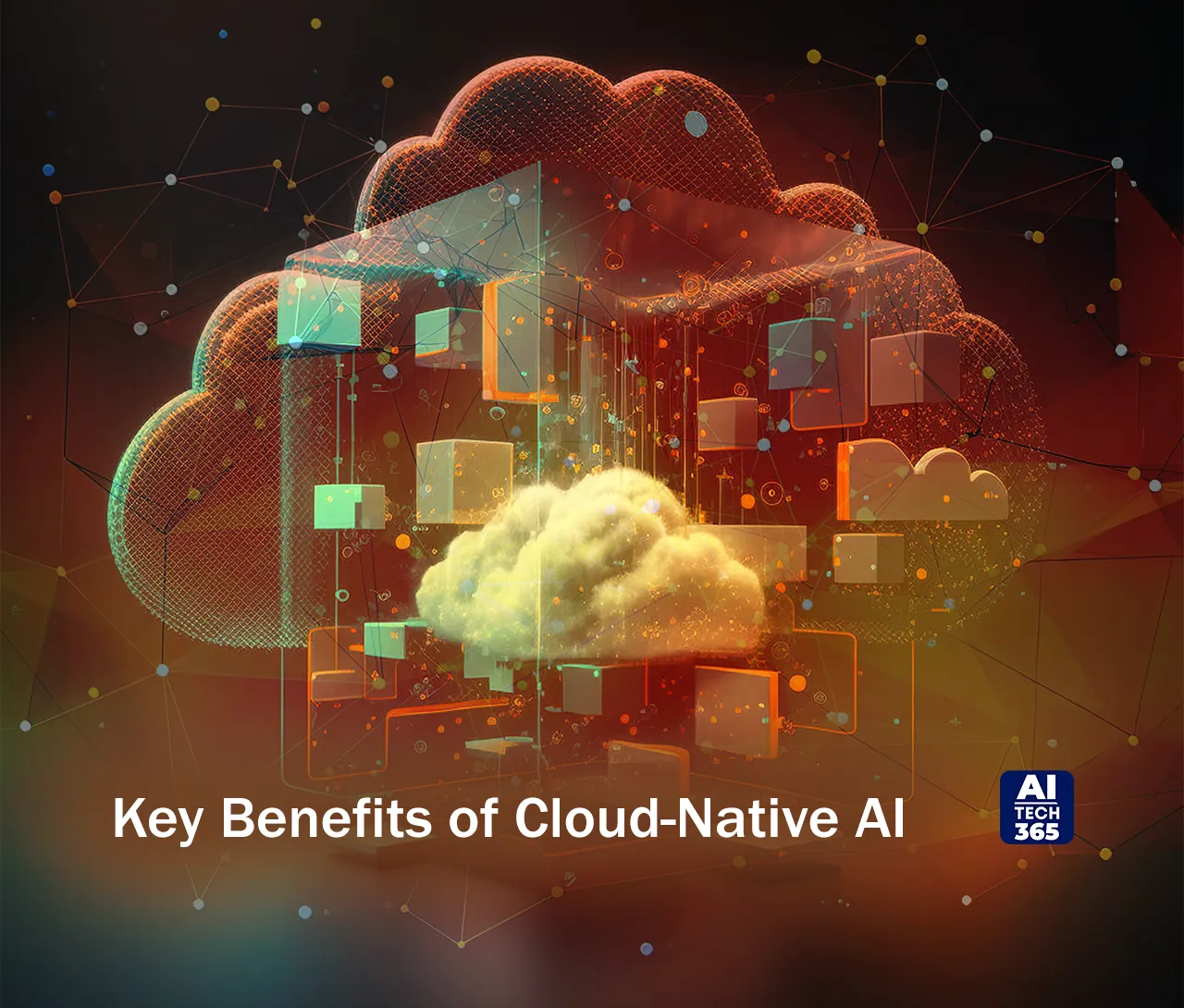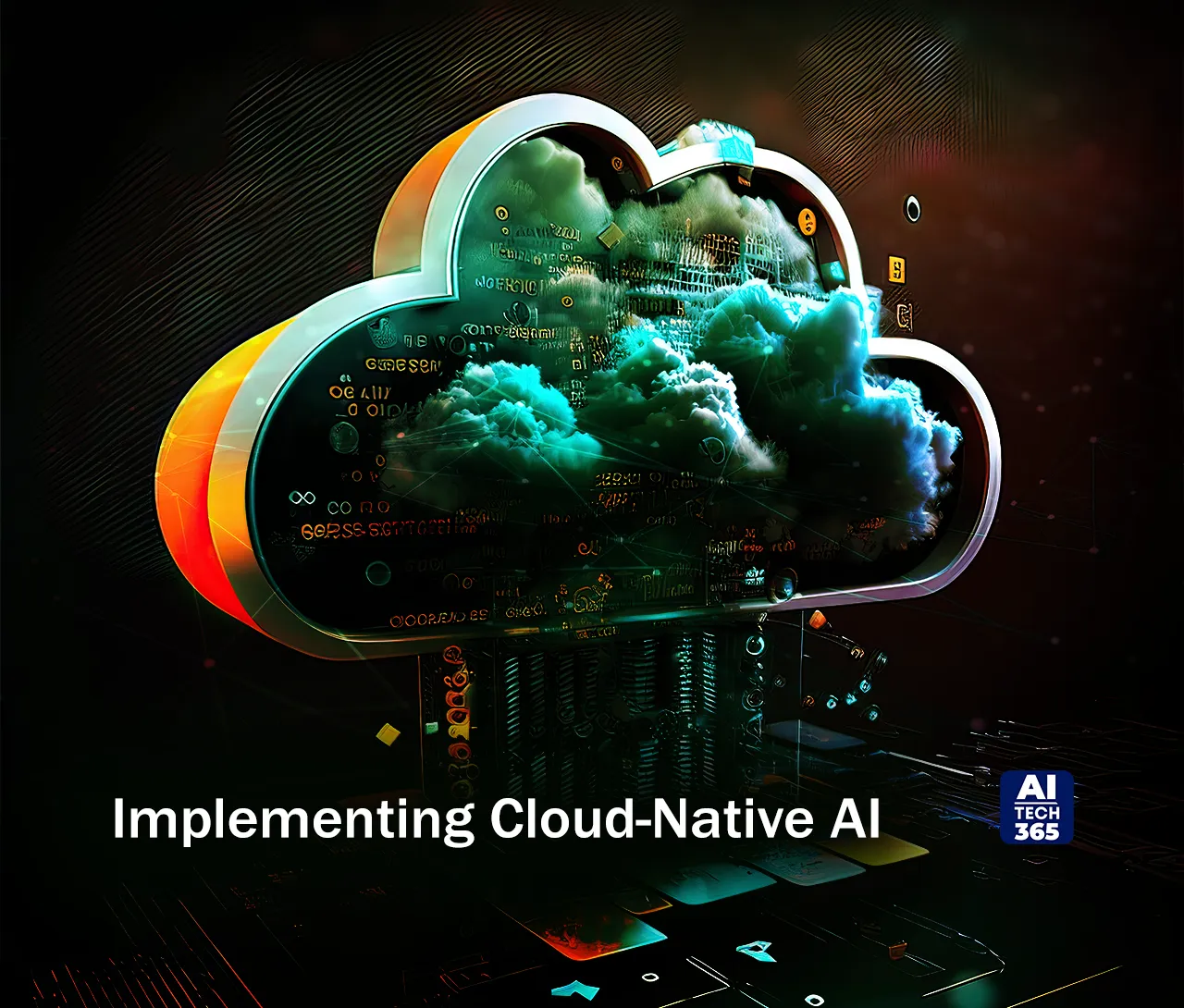Artificial Intelligence (AI) is no longer just a futuristic concept—it’s a driving force behind innovation in countless industries. But as AI continues to evolve, the infrastructure supporting it must keep pace. Enter cloud-native AI. It combines AI and ML models and apps with cloud-native tech, like Kubernetes, containers, and microservices. This approach uses the cloud’s distributed, scalable nature. It optimizes training and inference tasks. It lets organizations manage their AI workloads in real time.
Let’s learn more about these AI and cloud-native technologies as we move forward in this blog.
What is Cloud-Native AI?
Cloud-native AI (CNAI) is the process of developing and implementing workloads and applications for artificial intelligence based on cloud-native technological concepts. This involves using cloud-native technologies, like CI/CD, declarative APIs, microservices, and containerization. They improve the scalability, reusability, and operability of AI applications.
Why Cloud-Native AI?
The cloud’s elastic, always-on architecture enables fast experiments. It lets businesses, entrepreneurs, and developers provide new services and scale solutions. It also uses resource sharing to do so economically. Average users no longer worry about ordering gear or issues like space, power, network connectivity, cooling, software licensing, and installation. AI faces similar issues with rapid prototyping. It needs access to storage, networking, and computing resources for training and inference tasks, both small and large.
Key Benefits of Cloud-Native AI
 ● Scalability and Resource Optimization
● Scalability and Resource Optimization
In CNAI, resources are dynamically allocated. This uses features like horizontal pods and advanced resource allocation strategies. This ensures optimal resource utilization, especially when handling large-scale AI models. Organizations can scale their AI apps based on demand. This makes them cost-effective and efficient.
● Improved AI Workload Management
Running AI workloads on hybrid clouds offers unparalleled flexibility. Businesses can split tasks like training and inference. They can use on-premise infrastructure and public cloud services. This hybrid approach is ideal for real-time AI apps where low latency is critical.
● Open Source and Collaboration
Cloud-native AI thrives on a vibrant ecosystem of open-source projects. Tools like TensorFlow, PyTorch, and Kubeflow help developers use AI/ML in cloud-native environments. This enables collaboration and innovation.
● Enhanced Resource Sharing and Efficiency
Kubernetes enables organizations to share resources effectively across various AI applications. By managing workloads in Kubernetes clusters, businesses can do better resource allocation. This will also maintain consistency and reliability.
Also Read: Understanding the Difference Between Serverless Analytics vs. Traditional Data Analytics
Implementing Cloud-Native AI
 First, to fully use CNAI, enterprises must prioritize:
First, to fully use CNAI, enterprises must prioritize:
- Flexibility
- Sustainability
- Custom platform dependencies
- Reference implementation
- Industry-standard terminology
Moreover, cloud-native environments must be flexible. They must support various AI tools, workloads, and frameworks. Making sure AI systems and models can be effectively expanded, maintained, and managed over time is a key component of sustainability. Some AI tasks may need custom platforms. These may require specialized hardware or libraries. The reference implementation gives guidelines for using AI in cloud-native settings. Organizations can use it for best practices. For the CNAI ecosystem to create common standards and practices, terminologies must be accepted by the industry.
Integrating AI and ML into cloud-native systems is becoming easier. This is due to evolving solutions like Kubeflow, OpenLLMetry, and vector databases. Kubeflow is an open-source platform. It simplifies deploying AI workflows on Kubernetes. It offers a vast collection of tools for creating, training, serving, and growing AI models. OpenLLMetry is a distributed tracing solution. It helps businesses track and evaluate AI apps in cloud-native settings. Vector databases can efficiently store and retrieve high-dimensional data. They are designed for AI workloads and meet AI/ML app needs.
Use Cases of Cloud-Native AI
AI-Powered Applications
CNAI is the backbone of modern AI apps. It enables seamless scalability, reliability, and resource optimization. Examples of such applications include:
- Chatbots and Virtual Assistants: Cloud-native environments let AI tools, like chatbots, handle thousands of queries at once. This ensures responsiveness during peak usage.
- Recommendation Engines: Retailers and streaming platforms use CNAI to run real-time recommendation engines. These engines improve customer experiences with personalized suggestions.
- Fraud Detection: Financial institutions use CNAI to scan large datasets in real-time. It flags potential fraud instantly.
Kubernetes clusters and containerized architectures let these apps scale easily. They adjust resources as demand fluctuates, ensuring performance and cost efficiency.
Machine Learning Pipelines
Cloud-native AI simplifies building and running machine learning pipelines. It makes it easier to:
- Preprocess Data: Cloud-native systems handle massive datasets. They ensure efficient data cleaning, augmentation, and transformation.
- Train Models: Distributed computing in hybrid clouds speeds up model training by sharing resources across environments.
- Deploy Models: Tools like Kubeflow work well with Kubernetes. They let developers automate deployments and monitor models in production.
For example, a healthcare organization can use CNAI to streamline the entire pipeline for training diagnostic models on medical imaging data. This will ensure faster and more accurate predictions.
Cross-Industry Innovation
- Healthcare: Cloud-native AI supports innovations like personalized medicine and predictive diagnostics. For instance, training AI models on genetic and medical data can predict diseases. Scalable training and inference ensure real-time results.
- Manufacturing: Predictive maintenance relies on CNAI to monitor equipment in real-time. AI models can predict machinery failures by analyzing sensor data. This reduces downtime and saves costs.
- Retail: Retailers use AI apps, powered by the cloud, to optimize inventory, forecast demand, and improve supply chains.
- Finance: CNAI analyzes vast transaction and user data to detect fraud and model credit risk. It does this in real-time, ensuring security and accuracy.
These industries need to share resources efficiently. It ensures optimal resource allocation while keeping strong AI workloads.
Real-time AI and Edge Computing
Cloud-native AI is key to real-time insights. It integrates AI into edge computing. Examples include:
- Smart Cities: AI models at the edge analyze traffic, pollution, and energy use in real-time. This ensures efficient urban management.
- IoT Devices: In agriculture, IoT sensors and cloud AI enable real-time monitoring of soil and weather. This improves crop yields.
- Autonomous Vehicles: CNAI powers self-driving cars’ decision systems. It processes data from cameras, LiDAR, and other sensors in real-time.
Distributing AI workloads across hybrid clouds and edge locations can reduce latency. This will improve responsiveness in time-critical situations.
By adopting cloud-native artificial intelligence, organizations can optimize operations, improve efficiency, and stay ahead in their industries.
The Future of CNAI
There is no denying the possibility of creating previously unheard-of capabilities as long as enterprises continue to manage the intricacies of CNAI. By overcoming obstacles, businesses can unlock new creativity and competitiveness. Integrating AI into the cloud-native offers risks and opportunities. AI-powered insights, predictions, and automation can change industries. In cloud-native settings, they can help businesses improve consumer experiences, streamline processes, and create new products and services.
Conclusion
AI and cloud-native computing are a game-changing tech combo. They offer limitless possibilities to enterprises that embrace them. By understanding the dynamic cloud-native AI ecosystem and using the right tactics, companies can lead in innovation. This will drive revolutionary change and reshape the future of technology. Those that use CNAI’s strengths will thrive in the digital future.


